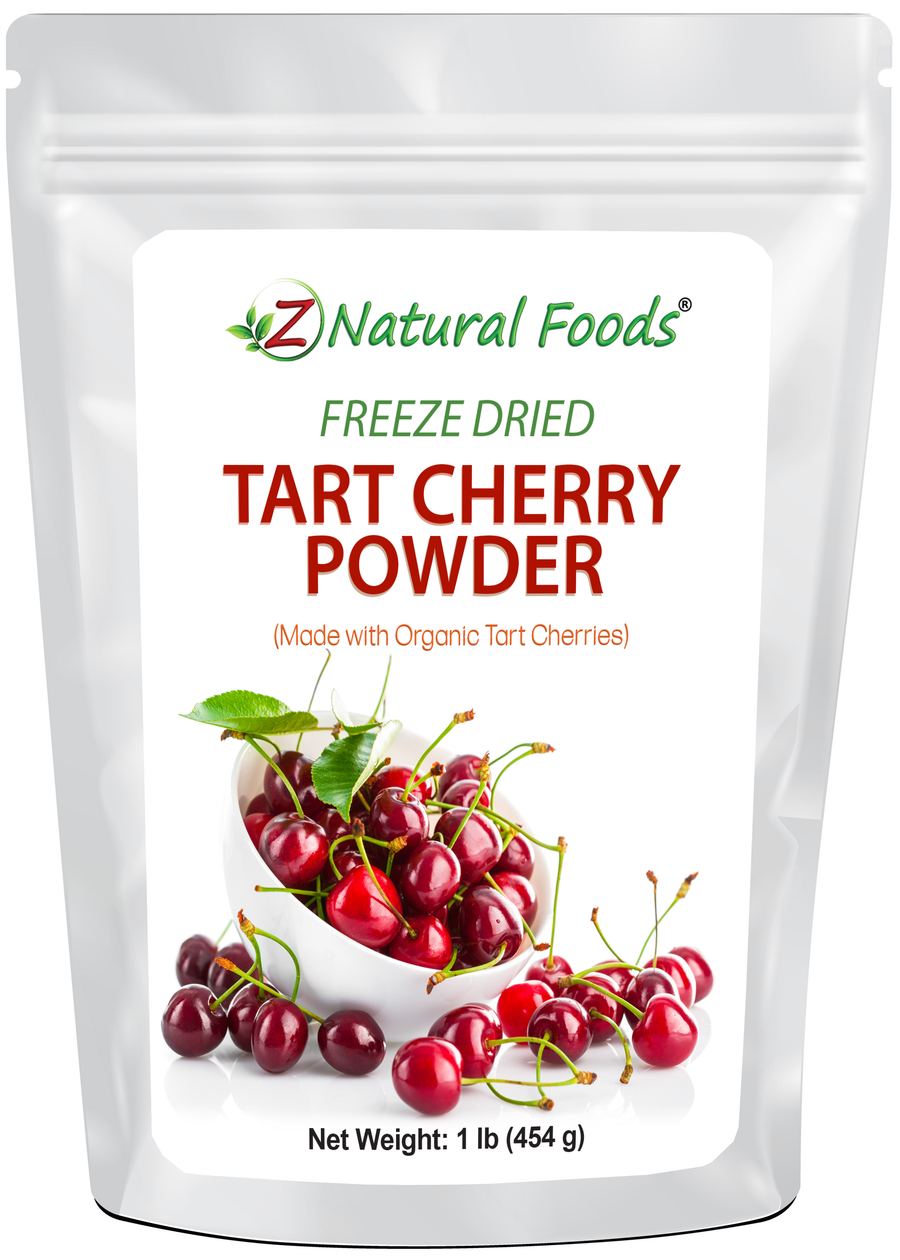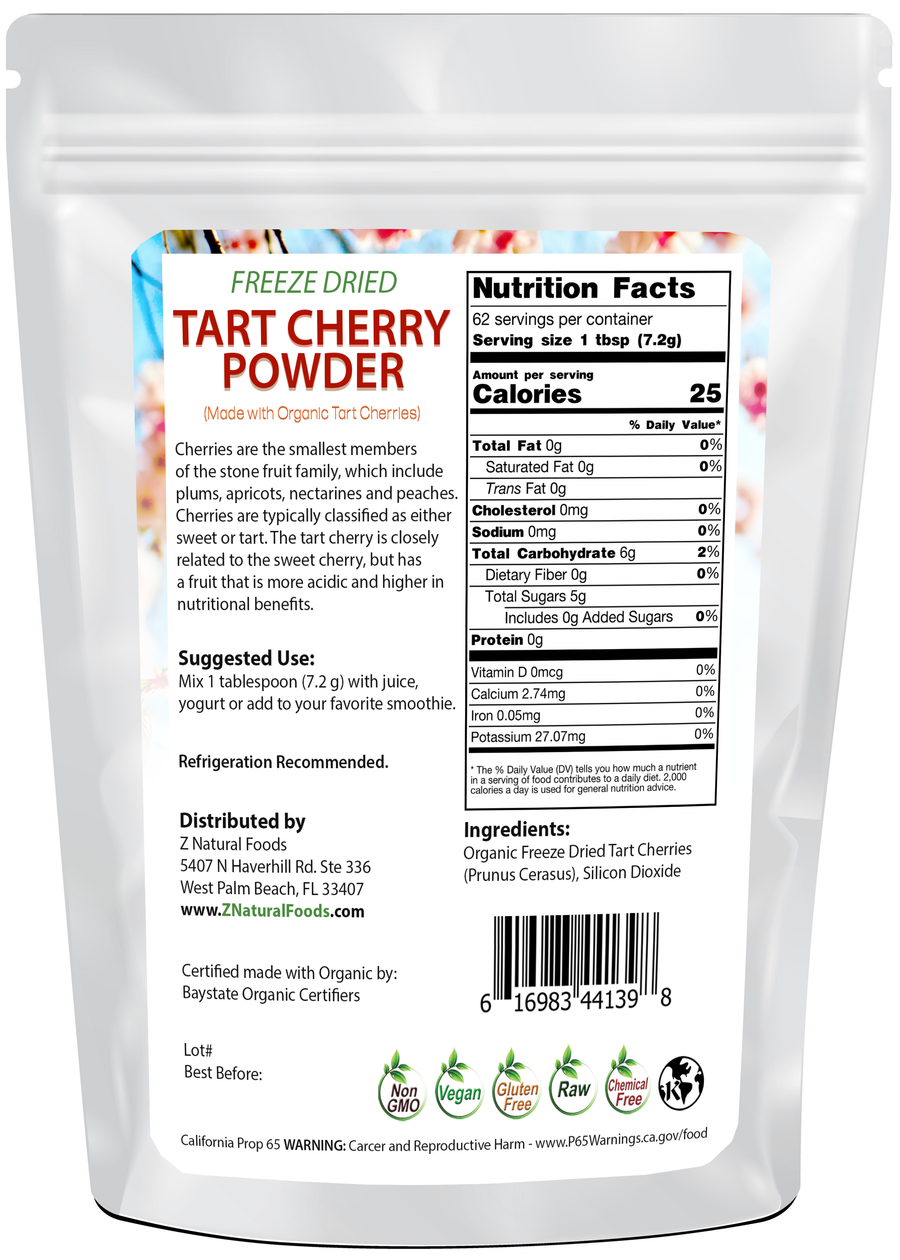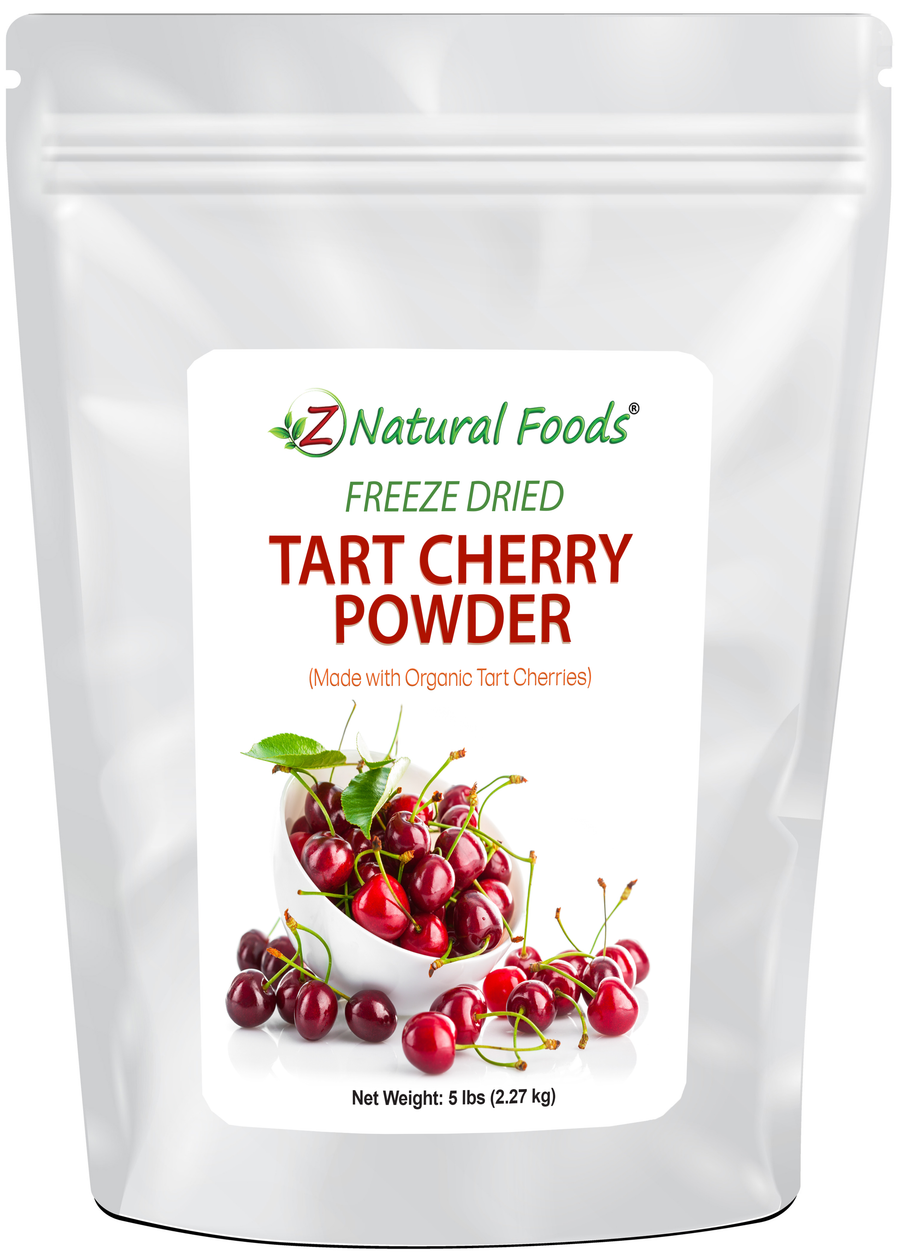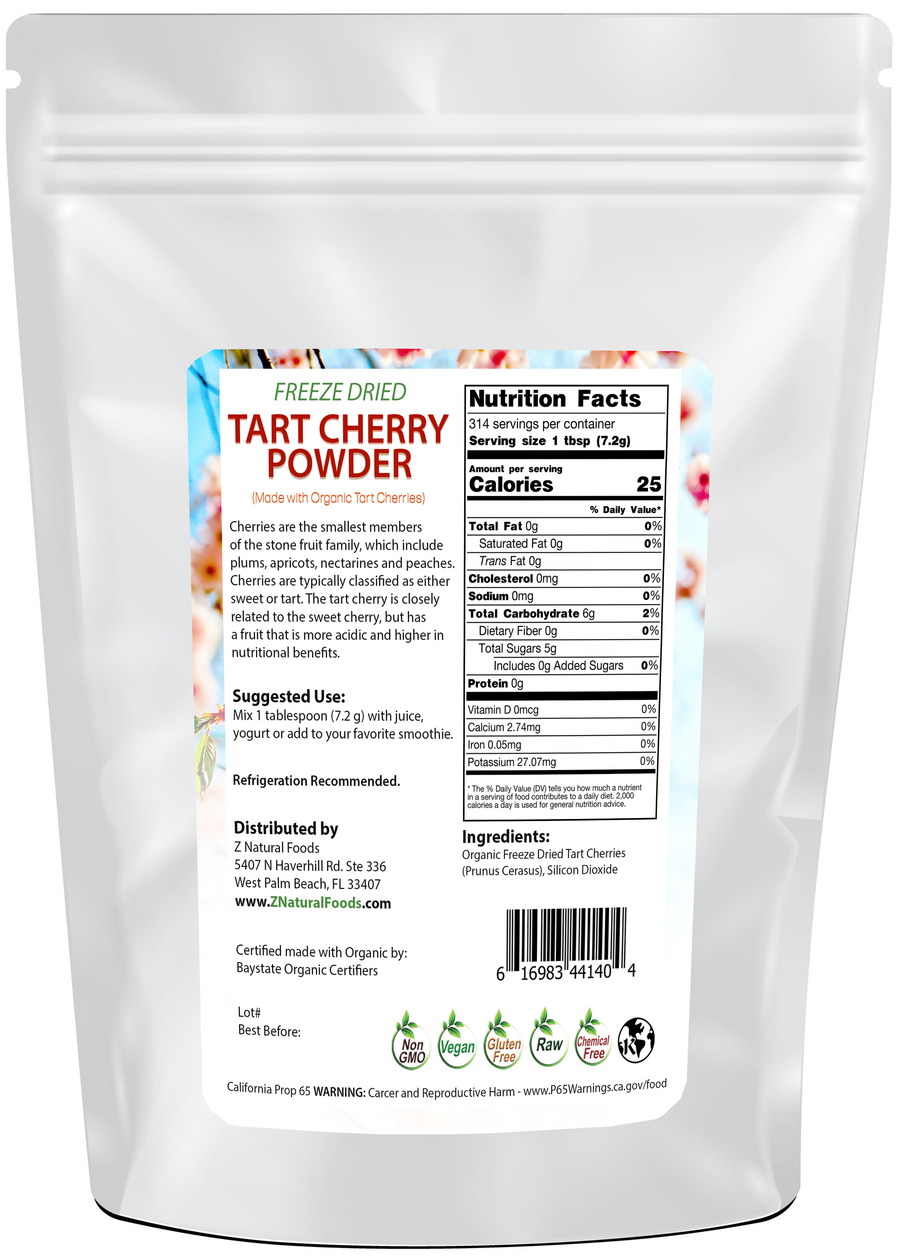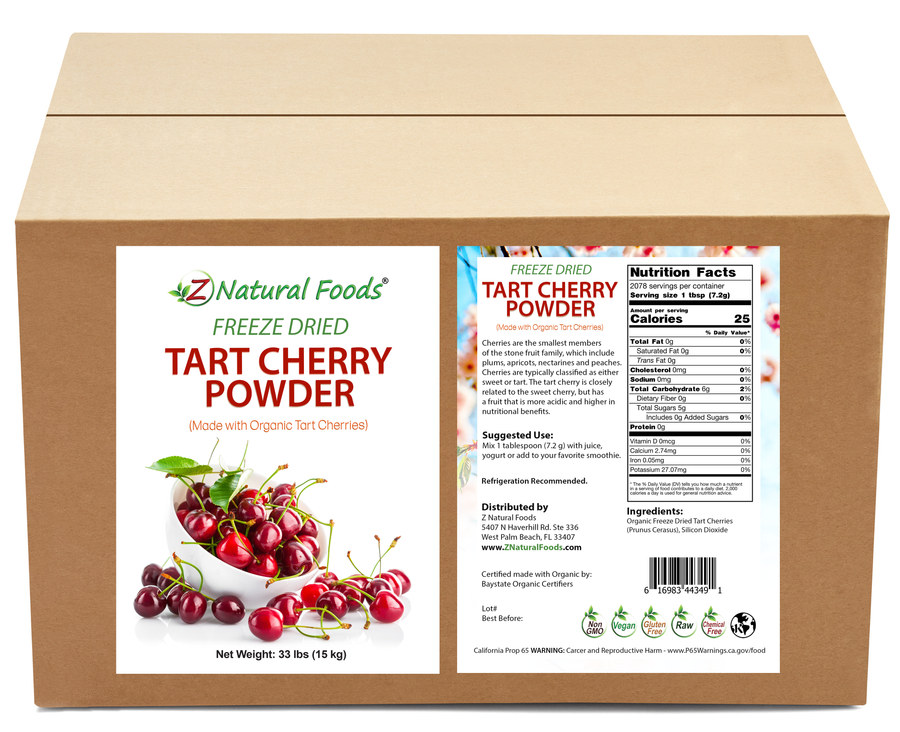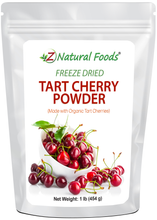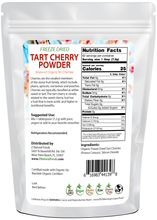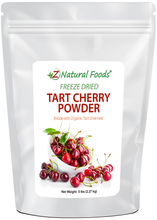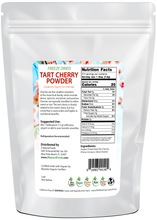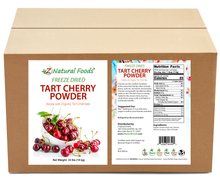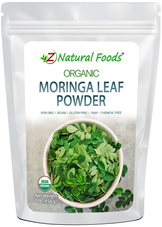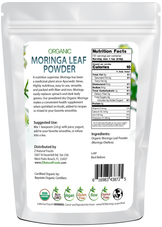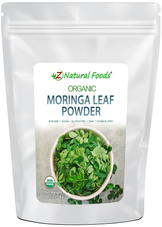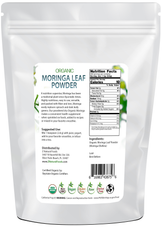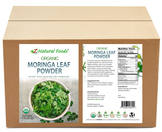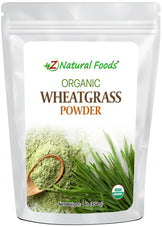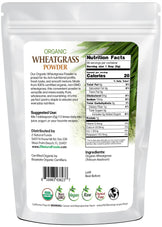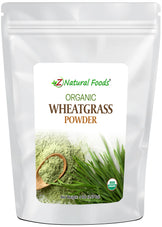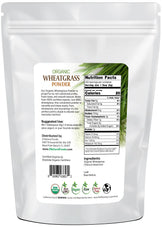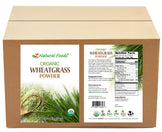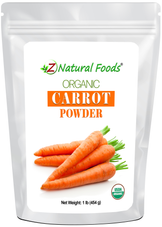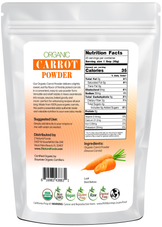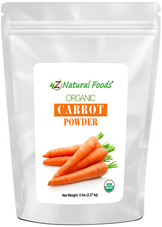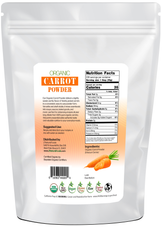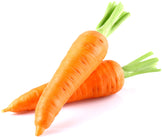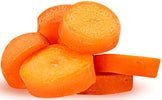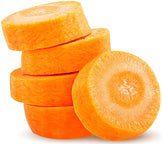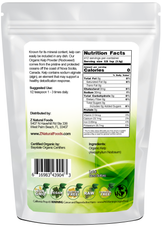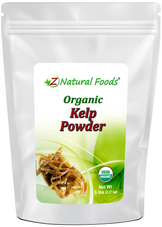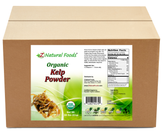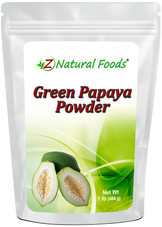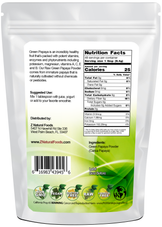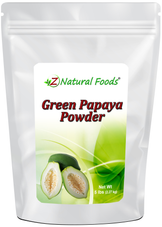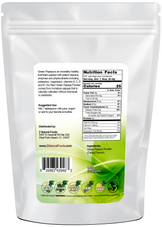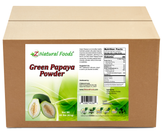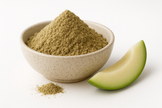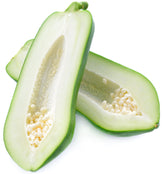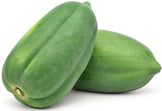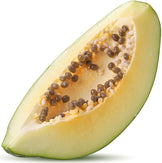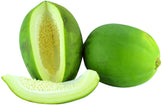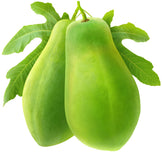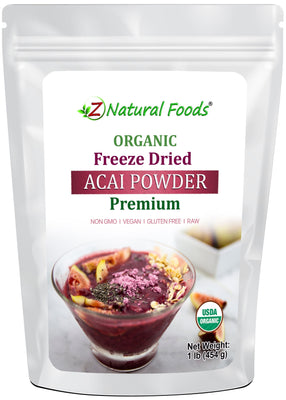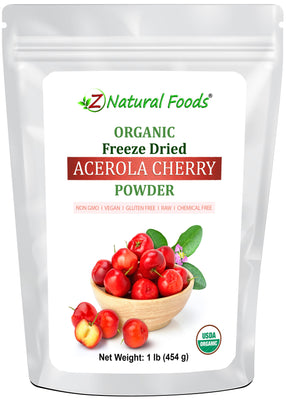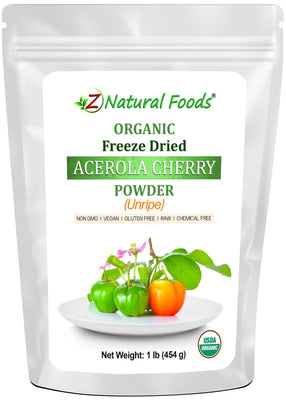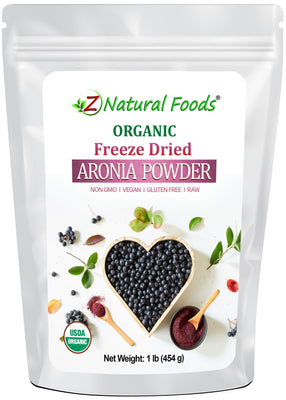About Product
Freeze-Dried Tart Cherry Powder is made from organic sour cherries that are carefully freeze-dried and milled into a fine powder. With their bold sweet-tart flavor and rich red color, tart cherries add a vibrant fruity note to drinks and recipes. This powder mixes easily into smoothies, juices, and teas for a refreshing boost.
Shelf-stable and versatile, tart cherry powder is also ideal for baking, sauces, dressings, and desserts. Sprinkle it over yogurt or oatmeal, stir it into pancake or muffin batter, or blend it into energy bars. Convenient and easy to use, it’s a simple way to enjoy the distinct taste of tart cherries year-round.
Some research suggests that Tart Cherries may contain the following constituents:
- Minerals: Magnesium, Phosphorus, Zinc, Copper, Manganese,
- Vitamins: Vitamin C, Thiamin, Riboflavin, Niacin, Pantothenic Acid, Vitamin B-6, Folate, Choline, Vitamin A (RAE), Beta carotene, Vitamin A (IU), Lutein & Zeaxanthin, Vitamin E (Alpha), Vitamin K
- Anthocyanidins: Peonidin, Cyanidin
- Flavan-3-ols: Catechin, Epicatechin
- Flavonols: Kaempferol, Quercetin, Isorhamnetin
This product is 100% natural and minimally processed. Taste, smell, texture, and color vary from batch to batch. Due to its nature, this powder tends to clump. If clumping occurs, lay the bag on a flat surface and place a towel over the bag. Then pound on the bag until the clumps break up. The towel will help protect the bag from damage. To further reduce clumping, push as much air as possible before sealing the pouch and store in the refrigerator or freezer.
Suggested Use: Mix one tablespoon with juice and yogurt or add to your favorite smoothie. We recommend refrigerating this product to maintain freshness.
Mixing Suggestions: To increase flavor and nutritional profile, combined with our organic extra-rich cacao powder.
Botanical Name: Prunus cerasus.
Other Names: sour cherry, wild cherry, pie cherry, tart cherry juice, Montmorency cherry, Balaton cherry
Parts Used: Whole Cherry (No Seed).
Ingredients: Organic Freeze-Dried Tart Cherries, Silicon Dioxide.*
*This product contains a small amount of silicon dioxide, which acts as a drying agent and is necessary to keep this powder from clumping into hard chunks or one solid brick.
Origin: Grown and freeze-dried in the USA and packaged with care in Florida, USA.
How to Maintain Optimum Freshness
- This product is packaged in airtight stand-up, resealable foil pouches for optimum freshness.
- Once opened, push the air out of the pouch before resealing it to preserve maximum potency.
- Keep your powder in a cool, dark, dry place.
This product is 100% natural and minimally processed:
Taste, smell, texture, and color vary from batch to batch. Go here to learn why our products may naturally vary.
The important protections we take to bring you safe and nutritious superfoods:
Please go here to discover the essential steps we take to deliver fresh, quality nutrition.
Bulk Quantities?
Need to order a large quantity of our products? We are happy to help! Please get in touch with our Bulk department to discuss the details.
* Product packaging, pictures, and origin may vary.
Sources & References
1. Available at: http://www.fda.gov/Food/GuidanceComplianceRegulatoryInformation/ ComplianceEnforcement/ucm081724.htm. Accessed February 27, 2013.
2. Available at: http://usatoday30.usatoday.com/news/health/2006-03-19-cherry-warnings_x.htm. Accessed February 27, 2013.
3. Tall JM, Seeram NP, Zhao C, Nair MG, Meyer RA, Raja SN. Tart cherry anthocyanins suppress inflammation-induced pain behavior in rat. Behav Brain Res. 2004 Aug 12;153(1):181-8.
4. Seeram NP, Bourquin LD, Nair MG. Degradation products of cyanidin glycosides from tart cherries and their bioactivities. J Agric Food Chem. 2001;49:4924-9.
5. Wang H, Nair MG, Strasburg GM, et al. Antioxidant and anti-inflammatory activities of anthocyanins and their aglycon, cyanidin, from tart cherries. J Nat Prod. 1999;62:294-6.
6. Blando F, Gerardi C, Nicoletti I. Sour cherry (Prunus cerasus L.) anthocyanins as ingredients for functional foods. J Biomed Biotechnol. 2004;5:253-8.
7. Seeram NP, Momin RA, Nair MG, Bourquin LD. Cyclooxygenase inhibitory and antioxidant cyanidin glycosides in cherries and berries. Phytomedicine. 2001 Sep;8(5):362-9.
8. Conaghan PG. A turbulent decade for NSAIDs: update on current concepts of classification, epidemiology, comparative efficacy, and toxicity. Rheumatol Int. 2012 Jun;32(6):1491-502.
9. Labianca R, Sarzi-Puttini P, Zuccaro SM, Cherubino P, Vellucci R, Fornasari D. Adverse effects associated with non-opioid and opioid treatment in patients with chronic pain. Clin Drug Investig. 2012 Feb;32 Suppl 1:53-63.
10. Gosslau A, Shiming L, Ho CT, Chen KY, Rawson NE. The importance of natural product characterization in studies of their anti-inflammatory activity. Mol Nutr Food Res. 2010;55:74-82.
11. McCune LM, Kubota C, Stendell-Hollis NR, Thomson CA. Cherries and health: a review. Crit Rev Food Sci Nutr. 2011 Jan;51(1):1-12.
12. Ferretti G, Bacchetti T, Belleggia A, Neri D. Cherry antioxidants: from farm to table. Molecules. 2010 Oct 12;15(10):6993-7005.
13. Mulabagal V, Lang GA, DeWitt DL, Dalavoy SS, Nair MG. Anthocyanin content, lipid peroxidation and cyclooxygenase enzyme inhibitory activities of sweet and sour cherries. J Agric Food Chem. 2009 Feb 25;57(4):1239-46.
14. Hou DX. Potential mechanisms of cancer chemoprevention by anthocyanins. Curr Mole Med. March 2003;3(2):149-59.
15. Seymour EM, Lewis A, Kirakosyan A, Bolling S. The effect of tart cherry-enriched diets on abdominal fat gene expression in rats. J Am Diet Assoc. 2008;108(9):A14-14E.
16. Seymour EM, Singer AA, Kirakosyan A, Urcuyo-Llanes DE, Kaufman PB, Bolling SF. Altered hyperlipidemia, hepatic steatosis, and hepatic peroxisome proliferator-activated receptors in rats with intake of tart cherry. J Med Food.2008 Jun;11(2):252-9.
17. Seymour EM, Lewis SK, Urcuyo-Llanes DE, Tanone II, Kirakosyan A, Kaufman PB, Bolling SF. Regular tart cherry intake alters abdominal adiposity, adipose gene transcription, and inflammation in obesity-prone rats fed a high fat diet. J Med Food. 2009 Oct;12(5):935-42.
18. Seymour EM, Kondoleon MG, Huang MG, Kirakosyan A, Kaufman PB, Bolling SF. Tart cherry-enriched diets reduce atherosclerosis and mortality in mice. FASEB J. Apr 2011;25(Meeting Abstract Supplement):980.10.
19. Kim DO, Heo HJ, Kim YJ, Yang HS, Lee CY. Sweet and sour cherry phenolics and their protective effects on neuronal cells. J Agric Food Chem. 2005;53:9921-7.
20. Halvorsen BL, Carlsen MH, Phillips KM, Bohn SK, Holte K, Jacobs DR, Blomhoff R. Content of redox-active compounds (i.e., antioxidants) in foods consumed in the United States. Am J Clin Nutr. 2006;84:95-135.
21. Shih PH, Yeh CT, Yen GC. Anthocyanins induce activation of phase II enzymes through the antioxidant response element pathway against oxidative stress-induced apoptosis. J Agric Food Chem. 2007;55:9427-35.
22. Nguyen T, Sherratt PJ, Pickett CB. Regulatory mechanisms controlling gene expression mediated by the antioxidant response element. Annu Rev Pharmacol Toxicol. 2003;43:233-60.
23. Kang SY, Seeram NP, Nair MG, Bourquin LD. Tart cherry anthocyanins inhibit tumor development in Apc(Min) mice and reduce proliferation of human colon cancer cells. Cancer Lett. 2003 May 8;194(1):13-9.
24. Thomasset S, Teller N, Cai H, et al. Do anthocyanins and anthocyanidins, cancer chemopreventive pigments in the diet, merit development as potential drugs? Cancer Chemoth Pharm. 2009 June;64(1):201-11.
25. Lachin T, Reza H. Anti diabetic effect of cherries in alloxan induced diabetic rats. Recent Pat Endocr Metab Immune Drug Discov. 2012 Jan;6(1):67-72.
26. Sarić A, Sobocanec S, Balog T, et al. Improved antioxidant and anti-inflammatory potential in mice consuming sour cherry juice (Prunus Cerasus cv. Maraska). Plant Foods Hum Nutr. 2009 Dec;64(4):231-7.
27. Neme Ide B, Alessandro Soares Nunes L, Brenzikofer R, Macedo DV. Time course of muscle damage and inflammatory responses to resistance training with eccentric overload in trained individuals. Mediators Inflamm. 2013;2013:204942. Epub 2013 Jan 22.
28. Howatson G, Van Someren KA: The prevention and treatment of exercise-induced muscle damage. Sports Med. 2008;38:483-503.
29. Morton JP, Kayani AC, McArdle A, Drust B. The exercise-induced stress response of skeletal muscle, with specific emphasis on humans. Sports Med. 2009;39(8):643-62.
30. Morley JE, Baumgartner RN, Roubenoff R, Mayer J, Nair KS. Sarcopenia. J Lab Clin Med. 2001 Apr;137(4):231-43.
31. Ducharme NG, Fortier LA, Kraus MS, et al. Effect of a tart cherry juice blend on exercise-induced muscle damage in horses. Am J Vet Res. 2009 Jun;70(6):758-63.
32. Kuehl KS, Perrier ET, Elliot DL, Chesnutt JC. Efficacy of tart cherry juice in reducing muscle pain during running: a randomized controlled trial. Journal Int Soc Sports. 2010;7:17.
33. Howatson G, McHugh MP, Hill JA, et al. Influence of tart cherry juice on indices of recovery following marathon running. Scand J Med Sci Sports. 2010;20:843-52.
34. Connolly DAJ, McHugh MP, Padilla-Zakour OI. Efficacy of a tart cherry juice blend in preventing the symptoms of muscle damage. Br J Sports Med. 2006;40:679-83.
35. Bowtell JL, Sumners DP, Dyer A, Fox P, Mileva KN. Montmorency cherry juice reduces muscle damage caused by intensive strength exercise. Med Sci Sports Exerc. 2011;43:1544-51.
36.Available at: http://www.cdc.gov/arthritis/data_statistics/arthritis_related_stats.htm#2. Accessed March 1, 2013.
37. Available at: http://www.nlm.nih.gov/medlineplus/osteoarthritis.html. Accessed March 1, 2013.
38. Available at: http://www.arthritis.org/conditions-treatments/disease-center/osteoarthritis/. Accessed March 1, 2013.
39. Available at: http://med.stanford.edu/ism/2011/november/osteoarthritis.html. Accessed March 1, 2013.
40. Available at: http://www.arthritistoday.org/conditions/osteoarthritis/treatment/oa-medications.php. Accessed March 1, 2013.
41. Zhao YL, Zhou GD, Yang HB, et al. Rhein protects against acetaminophen-induced hepatic and renal toxicity. Food Chem Toxicol. 2011 Aug;49(8):1705-10.
42. Available at: http://media.baylorhealth.com/releases/Can-Cherries-Relieve-the-Pain-of-Osteoarthritis. Accessed March 1, 2013.
43. Kuehl KS, Elliot DL, Sleigh A, Smith J. Efficacy of tart cherry juice to reduce inflammation biomarkers among women with inflammatory osteoarthritis. J Food Stud. 2012;1:14-25.
44. Martin KR, Bopp J, Burrell L, Hook G. The effect of 100% tart cherry juice on serum uric acid levels, biomarkers of inflammation and cardiovascular disease risk factors. FASEB J. April 2011;25 (Meeting Abstract Supplement):339.2.
45. Available at: http://www.niams.nih.gov/health_info/Gout/gout_ff.asp. Accessed March 1, 2013.
46. Available at: http://www.nlm.nih.gov/medlineplus/druginfo/meds/a682673.html#side-effects. Accessed March 1, 2013.
47. Available at: http://www.nlm.nih.gov/medlineplus/druginfo/meds/a682395.html#side-effects. Accessed March 1, 2013.
48. Available at: http://www.nlm.nih.gov/medlineplus/druginfo/meds/a682395.html#precautions. Accessed March 1, 2013.
49. Available at: http://www.nlm.nih.gov/medlineplus/druginfo/meds/a682673.html#precautions. Accessed March 1, 2013.
50. Zhang Y, Neogi T, Chen C, Chaisson C, Hunter DJ, Choi HK. Cherry consumption and decreased risk of recurrent gout attacks.
51. Arthritis Rheum. 2012 Dec;64(12):4004-11. doi: 10.1002/art.34677.
52. McDade TW. Early environments and the ecology of inflammation. Proc Natl Acad Sci USA. 2012 Oct 16;109 Suppl 2:17281-8.
53. Kershaw EE, Flier JS. Adipose tissue as an endocrine organ. J Clin Endocrinol Metab. 2004;89(6):2548-56.
54. Calder PC, Ahluwalia N, Brouns F, et al. Dietary factors and low-grade inflammation in relation to overweight and obesity. Br J Nutr. 2011 Dec;106 Suppl 3:S5-78.
55. Fontana L, Eagon JC, Trujillo ME, Scherer PE, Klein S. Visceral fat adipokine secretion is associated with systemic inflammation in obese humans. Diabetes. 2007;56:1010-3.
56. Bachstetter AD, Norris CM, Sompol P, et al. Early stage drug treatment that normalizes proinflammatory cytokine production attenuates synaptic dysfunction in a mouse model that exhibits age-dependent progression of Alzheimer's disease-related pathology. J Neurosci. 2012 Jul 25;32(30):10201-10.
57. Bulló M, GarcÃa-Lorda P, Megias I, Salas-Salvadó J. Systemic inflammation, adipose tissue tumor necrosis factor, and leptin expression. Obes Res. 2003 Apr;11(4):525-31.
58. Ference BA, Mahajan N. The role of early LDL lowering to prevent the onset of atherosclerotic disease. Curr Atheroscler Rep. 2013 Apr;15(4):312.
59. Ginsberg HN, Bonds DE, Lovato LC, et al. Evolution of the lipid trial protocol of the Action to Control Cardiovascular Risk in Diabetes (ACCORD) trial. Am J Cardiol. 2007 Jun 18;99(12A):56i-67i. Epub 2007 Apr 12.
60. Hippisley-Cox, J, Coupland C. Unintended effects of statins in men and women in England and Wales: population based cohort study using the QResearch database. BMJ. 2010 May 20;340:c2197.
61. Golomb BA, Evans MA. Statin adverse effects: a review of the literature and evidence for a mitochondrial mechanism. Am J Cardiovasc Drugs. 2008;8(6):373-418.
62. Seymour EM, Urcuyo-Llanes D, Bolling SF, Bennink MR. Tart cherry intake reduces plasma and tissue inflammation in obesity-prone rats. FASEB J. 2010 April;24(Meeting Abstract Supplement):335.1.
63. Seymour EM, Kondoleon MG, Huang MG, Kirakosyan A, Kaufman PB, Bolling SF. Tart cherry-enriched diets reduce atherosclerosis and mortality in mice. FASEB J. 2011 March;25(Meeting Abstract Supplement):980.10.
64. Seymour EM, Urcuyo-Llanes D, Kirakosyan A, Kaufman PB, Bolling SF. Comparative impact of tart cherry-enriched diets on metabolic syndrome and inflammation in rats fed high versus low carbohydrate diets. FASEB J. 2008 March;22(Meeting Abstract Supplement):702.7.
65. Wang LS, Stoner GD. Anthocyanins and their role in cancer prevention Cancer Lett. 2008 Oct 8;269(2):281-90.
66. Bagchi D, Sen CK, Bagchi M, Atalay M. Anti-angiogenic, antioxidant, and anti-carcinogenic properties of a novel anthocyanin-rich berry extract formula. Biochemistry (Mosc). 2004 Jan;69(1):75-80, 1 p preceding 75.
67. Hou DX, Ose T, Lin S, et al. Anthocyanidins induce apoptosis in human promyelocytic leukemia cells: structure-activity relationship and mechanisms involved. Int J Oncol. 2003 Sep;23(3):705-12.
68. Kang SY, Seeram NP, Nair MG, Bourquin LD. Tart cherry anthocyanins inhibit tumor development in Apc(Min) mice and reduce proliferation of human colon cancer cells. Cancer Lett. 2003 May 8;194(1):13-9.
69. Schroeter H, Spencer JPE, Rice-Evans C, Williams RJ. Flavonoids protect neurons from oxidized low-density-lipoprotein-induced apoptosis involving c-Jun N-terminal kinase (JNK), c-Jun and caspase-3. Biochem. J. 2001;358:547-57.
70. Halliwell B. Role of free radicals in the neurodegenerative diseases: therapeutic implications for antioxidant treatment. Drugs Aging.2001;18(9):685-716.
71. Alexi T, Borlongan CV, Faull RLF, et al. Neuroprotective strategies for basal ganglia degeneration: Parkinson's and Huntington's diseases. Progr. Neurobiol. 2000;60:409-70.
72. Cantutui-Castelvetri I, Shukitt-Hale B, Joseph JA. Neurobehavioral aspects of antioxidants in aging. Int. J. Dev. Neurosci. 2000;18:367-81.
73. Wang H, Nair MG, Strasburg GM, Booren AM, Gray JI. Antioxidant polyphenols from tart cherries (Prunus cerasus). J Agric Food Chem. 1999 Mar;47(3):840-4.
74. Johnston KL, Clifford MN, Morgan LM. Coffee acutely modifies gastrointestinal hormone secretion and glucose tolerance in humans: glycemic effects of chlorogenic acid and caffeine. Am J Clin Nutr. 2003 Oct;78(4):728-33.
75. Hemmerle H, Burger HJ, Below P, et al. Chlorogenic acid and synthetic chlorogenic acid derivatives: novel inhibitors of hepatic glucose-6-phosphate translocase. J Med Chem. 1997 Jan 17;40(2):137-45.
76. Kelley DS, Adkins Y, Reddy A, Woodhouse LR, Mackey BE, Erickson KL. Sweet Bing cherries lower circulating concentrations of markers for chronic inflammatory diseases in healthy humans. J Nutr. 2013;143:340-4.
77. Rice-Evans C. Screening of phenolics and flavonoids for antioxidant activity. In: Packer L, Hiramatsu M, Yoshikawa T, editors. Antioxidant Food Supplements in Human Health. San Diego, Calif: Academic Press; 1999. pp. 239"“253.
78. Kamei H, Kojima S, Hasegawa M, Umeda T, Terabe K, Yukawa T. Suppressive effect of flavonoid extracts from flower petals on cultured human malignant cells. J Clin Exp Med. 1993;164:829"“830.
79. Bomser J, Madhavi D.L, Singletary K, Smith M.A. In vitro anticancer activity of fruit extracts from Vaccinium species. Planta Med. 1996;62(3):212"“216.
80. Wang H, Nair M.G, Iezzoni A, Strasburg G.M, Booren A.M, Gray J.I. Quantification and characterization of anthocyanins in Balaton tart cherries. J Agric Food Chem. 1997;45(7):2556"“2560.
81. Wang H, Nair M.G, Strasburg G.M, et al. Antioxidant and antiinflammatory activities of anthocyanins and their aglycon, cyanidin, from tart cherries. J Nat Prod. 1999;62(2):294"“296.
82. Kang S.Y, Seeram N.P, Nair M.G, Bourquin L.D. Tart cherry anthocyanins inhibit tumor development in ApcMin mice and reduce proliferation of human colon cancer cells. Cancer Lett. 2003;194(1):13"“19.
83. Smith M.A, Pépin M. Stimulation of bioactive flavonoid production in suspension and bioreactor-based cell cultures. In: Altman A, Ziv M, Izhar S, editors. Plant Biotechnology and In Vitro Biology in the 21st Century. Dordrecht: Kluwer Academic Publishers; 1999. pp. 333"“336.
84. Curtin C, Zhang W, Franco C. Manipulating anthocyanin composition in Vitis vinifera suspension cultures by elicitation with jasmonic acid and light irradiation. Biotechnol Lett. 2003;25(14):1131"“1135.
85. Plata N, Konczak-Islam I, Jayram S, McClelland K, Woolford T, Franks P. Effect of methyl jasmonate and p-coumaric acid on anthocyanin composition in a sweet potato cell suspension culture. Biochemical Engineering Journal. 2003;14(3):171"“177.
86. Hong V, Wrolstad R.E. Characterization of anthocyanin-containing colorants and fruit juices by HPLC/photodiode array detection. J Agric Food Chem. 1990;38(3):698"“708.
87. Goiffon J-P, Mouly P.P, Gaydou E.M. Anthocyanic pigment determination in red fruit juices, concentrated juices and syrups using liquid chromatography. Anal Chim Acta. 1999;382(1-2):39"“50.
88. Blando F. In vitro propagation of Prunus cerasus L. Italus Hortus. 2002;9(3):16"“17.
89. Blando F, Gala R, Gerardi C, Druart P, editors. Sour cherry (Prunus cerasus L) production towards the utilization for a new century. In: Proceedings of the 26th International Horticultural Congress; 2002; Toronto. IHS ed; p. 180.
90. Ou B, Hampsch-Woodill M, Prior R.L. Development and validation of an improved oxygen radical absorbance capacity assay using fluorescein as the fluorescent probe. J Agric Food Chem. 2001;49(10):4619"“4626.
91. Re R, Pellegrini N, Proteggente A, Pannala A, Yang M, Rice-Evans C. Antioxidant activity applying an improved ABTS radical cation decolorization assay. Free Radic Biol Med. 1999;26(9-10):1231"“1237.
92. Takeda J. Light-induced synthesis of anthocyanin in carrot cells in suspension. J Exp Bot. 1991;41:749"“755.
93. Konczak-Islam I, Nakatani M, Yoshinaga M, Yamakawa O. Effect of ammonium ion and temperature on anthocyanin composition in sweet potato cell suspension culture. Plant Biotechnol. 2001;18(2):109"“117.
94. Huang D, Ou B, Hampsch-Woodill M, Flanagan J.A, Prior R.L. High-throughput assay of oxygen radical absorbance capacity (ORAC) using a multichannel liquid handling system coupled with a microplate fluorescence reader in 96-well format. J Agric Food Chem. 2002;50(16):4437"“4444.
95. Proteggente A.R, Pannala A.S, Paganga G, et al. The antioxidant activity of regularly consumed fruit and vegetables reflects their phenolic and vitamin C composition. Free Radic Res. 2002;36(2):217"“233.
96. Lister C.E, Wilson P.E, Sutton K.H, Morrison S.C. Understanding the health benefits of blackcurrants. Acta Hort. 2002;585:443"“449.
97. Wang H, Nair M.G, Strasburg G.M, Booren A.M, Gray J.I. Novel antioxidant compounds from tart cherries (Prunus cerasus) J Nat Prod. 1999;62(1):86"“88.
98. Burkhardt S, Tan D.X, Manchester L.C, Hardeland R, Reiter R.J. Detection and quantification of the antioxidant melatonin in Montmorency and Balaton tart cherries (Prunus cerasus) J Agric Food Chem. 2001;49(10):4898"“4902.
99. "Nutrition facts, cherries, sour, red, raw, 100 g". US Department of Agriculture National Nutrient Database, Standard Reference 21. Nutritiondata.com. Retrieved 19 February 2013.
100. Tall JM, Seeram NP, Zhao C, Nair MG, Meyer RA, Raja SN, JM (Aug 2004). "Tart cherry anthocyanins suppress inflammation-induced pain behavior in rat". Behav. Brain Res. 153 (1): 181"“8. doi:10.1016/j.bbr.2003.11.011. ISSN 0166-4328. PMID 15219719.
101. "Tart Cherries May Reduce Heart/Diabetes Risk Factors". Newswise, Retrieved on July 7, 2008.
102. Webster's New International Dictionary of the English Language. Springfield, Massachusetts: G. & C. Merriam Co., 1913. See amarelle at p. 67.
103. Stocks, Christopher (2009). "Britain's forgotten fruits". Flora 1: pages 1"“200.
104. "Major Food and Agricultural Commodities and Producers". Food and Agricultural Organization of the United Nations.
105. Jackson, Michael (1997). The Simon Schuster Pocket Guide to Beer. Simon and Schuster. p. 80. ISBN 978-0-684-84381-0.
106. USA (2013-03-25). "Effect of tart cherry juice (Prunus cerasus) on m... [Eur J Nutr. 2012] - PubMed - NCBI". Ncbi.nlm.nih.gov. Retrieved 2013-05-03.
107. Burkhardt S et al. "Detection and quantification of the antioxidant melatonin in Montmorency and Balaton tart cherries (Prunus cerasus)." Journal of Agricultural and Food Chemistry. 49.10 (2001):4898-902.
108. Connolly D et al. "The efficacy of a tart cherry juice blend in preventing the symptoms of muscle damage." British Journal of Sports Medicine. 2006 Jun 21.
109. Jacob RA et al. "Consumption of cherries lowers plasma urate in healthy women." Journal of Nutrition. 133.6 (2003):1826-9.
110. Kang SY et al. "Tart cherry anthocyanins inhibit tumor development in Apc(Min) mice and reduce proliferation of human colon cancer cells." Cancer Letters. 194.1 (2003):13-9.
111. Kim DO et al. "Sweet and sour cherry phenolics and their protective effects on neuronal cells." Journal of Agricultural and Food Chemistry. 53.26 (2005):9921-7.
112. Seeram NP et al. "Degradation products of cyanidin glycosides from tart cherries and their bioactivities." Journal of Agricultural and Food Chemistry. 49.10 (2001):4924-9.
113. Tall Jill M et al. "Tart cherry anthocyanins suppress inflammation-induced pain behavior in rat." Behavioural Brain Research. 153.1 (2004): 181-8.
114. http://www.lef.org/magazine/mag2013/jun2013_Anti-Inflammatory-Properties-of-Tart-Cherry_01.htm
115. http://www.ars.usda.gov/main/site_main.htm?modecode=80-40-05-25
* Reviews & Success Stories Disclaimer
Product reviews solely reflect the views and opinions expressed by the contributors and not those of Z Natural Foods. Z Natural Foods does not verify or endorse any claims made in these reviews. Statements have not been evaluated by the FDA and are not intended to diagnose, treat, cure, or prevent any disease or health condition.REFERRAL PROGRAM
Share your personal link to your friends and welcome them with rewards. Claim yours when they make their first purchase.

GIVE
$10 off discount

GET
$10 off discount
